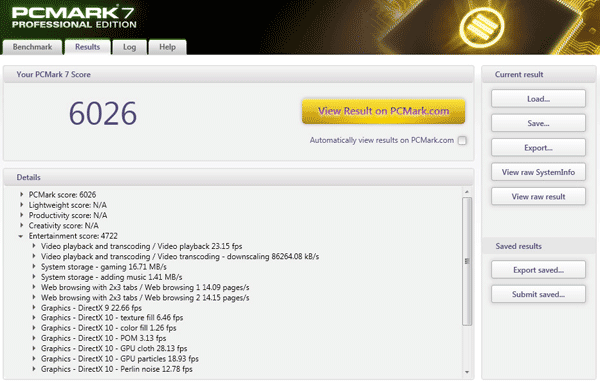Intel Core i7-3720QM Ivy Bridge Mobile Review
SiSoftware SANDRA and PCMark 7
We began our testing with SiSoftware's SANDRA 2011, the System ANalyzer,
Diagnostic and Reporting Assistant. We ran four of the built-in
subsystem tests that partially comprise the SANDRA 2012 suite (CPU
Arithmetic, Multimedia, Cache and Memory Latency and Memory Bandwidth).
|
{

SANDRA Processor Arithmetic and Multimedia Tests


SANDRA Cache and Memory Latency and Memory Bandwidth Tests




SANDRA Processor Arithmetic and Multimedia Tests


SANDRA Cache and Memory Latency and Memory Bandwidth Tests
In these quick synthetic tests Ivy Bridge shows a significant 15 - 20% performance advantage over previous generation Sandy Bridge CPUs, along with about 1.25GB/sec more memory bandwidth. Cache latency is ever so slightly higher in some cases with Ivy Bridge however.
|
Next up, we ran our test systems through Futuremark’s previous
generation total-system performance evaluation tool, PCMark Vantage.
PCMark Vantage runs through a host of different usage scenarios to
simulate different types of workloads including High Definition TV and
movie playback and manipulation, gaming, image editing and manipulation,
music compression, communications, and productivity. Since we have a database of scores for this test, we felt it would be good to give
you additional reference points to compare to.


Keep in mind we're showing you reference scores versus Utlrabooks primarily here, with lower power dual-core CPUs for the most part. However, each of these machines are also configured with fast SSDs, which affects the score in PCMark 7 significantly since it's a rather disk sensitive benchmark. Recently, this new crop of Ultrabooks as chalked up top end scores in this benchmark as a result of their SSD storage subsystems primarily. With the Ivy Bridge-powered Asus N56VM setup with a 240GB OCZ Vertex 3 SSD, we saw some of the best PCMark 7 scores we've ever recorded from a notebook thus far.






